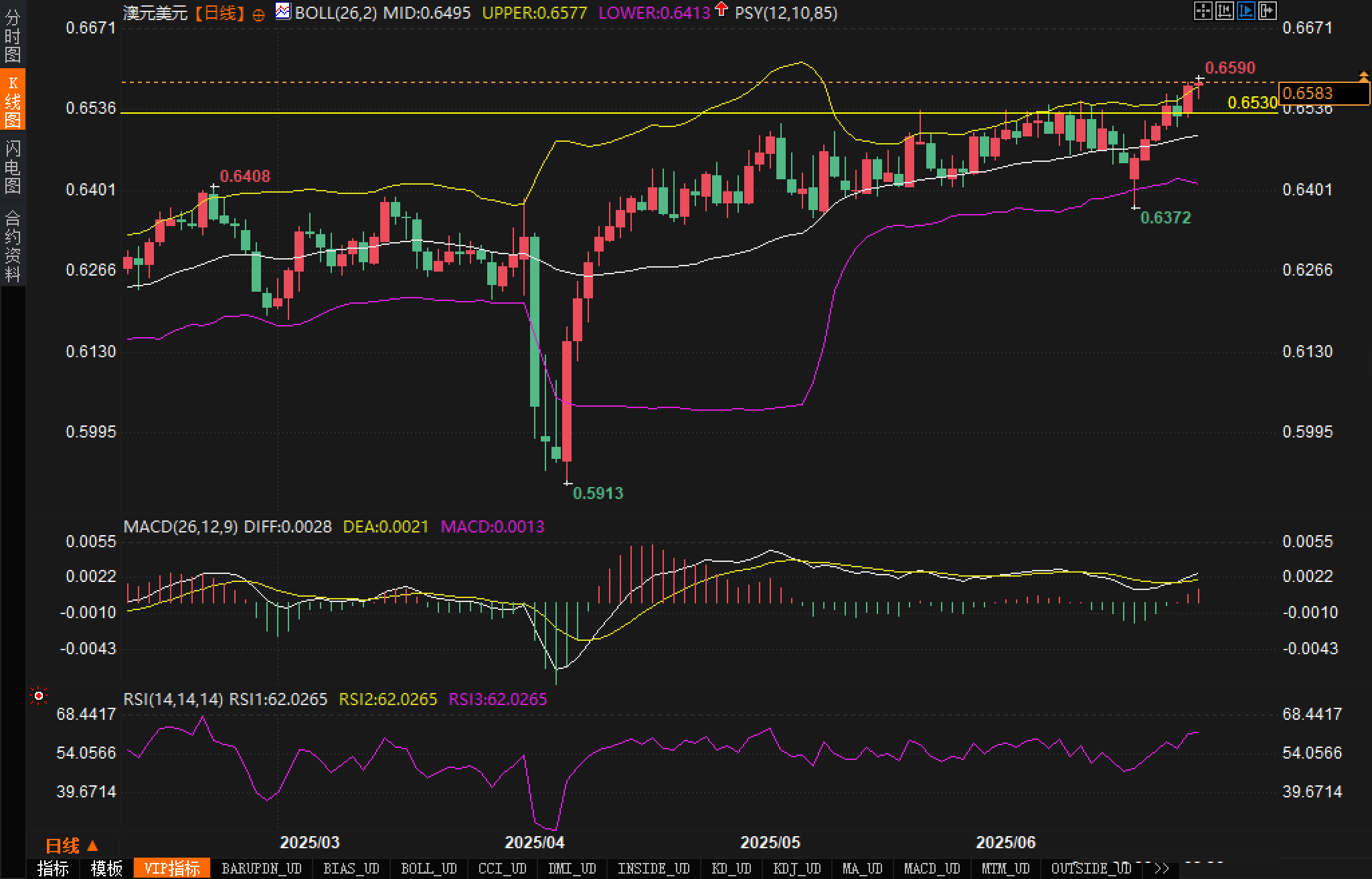The Australian dollar has broken through key resistances. What signals are hidden behind this year's new high?
2025-07-01 20:05:58

The US dollar index continues to be under pressure, mainly due to the market's growing concerns about the US fiscal situation and the expectation of the Federal Reserve's interest rate cut this year. The US tax reform bill may increase the debt by $3.3 trillion, coupled with the uncertain prospects of trade negotiations and weak US domestic manufacturing data, which has led to a continued sluggish sentiment for the US dollar.
On the other hand, the Australian dollar received indirect support from the recovery of the manufacturing industry in its major export destination countries, which promoted the improvement of market sentiment and benefited the Australian dollar. In addition, although the Australian government expects export revenue to decline in the future, export volume still maintains growth, partially offsetting the negative impact of weak prices.
Technical aspects:
Judging from the daily chart, the exchange rate accelerated upward after effectively breaking through the key resistance level of 0.6530. It is currently running near the upper track of the Bollinger Band, and the intraday high reached 0.6590, marking the establishment of a new high for the year; it shows that bullish momentum dominates and the short-term trend is clearly bullish.

The MACD indicator formed a golden cross above the zero axis, and the bar chart turned red and enlarged, further confirming the upward trend. The RSI indicator climbed to 62, indicating strong bullish power. The Bollinger Bands showed a clear opening state, and the upper track expanded upward, reflecting the amplification of volatility and supporting the continuation of the trend.
Analysts believe that the current support level focuses on the previous breakthrough of 0.6530. If it holds, it will create conditions for the subsequent impact of the 0.6610-0.6660 range. If it falls below this level, we need to be alert to the possibility of a short-term retracement of the middle track of 0.6495.
Market sentiment observation
The current market sentiment is clearly bullish. Negative factors for the US dollar have been released intensively, and traders are increasingly concerned about the risks of US debt and the uncertainty of US monetary policy.
It is worth noting that analysts believe that despite the favorable fundamentals and technical graphics, the rapid rise in the short term has pushed some emotions to extremes, and the RSI is close to the overbought area, and there is a possibility of short-term high-level fluctuations. The speech of Federal Reserve Chairman Powell in Portugal in the evening and the subsequent manufacturing and employment data may become the key trigger points for short-term direction selection.
Outlook
Bullish Outlook:
Analysts believe that if the Fed's remarks in the evening further release dovish signals, or US data continues to be weak, it will strengthen the market's pricing of interest rate cuts this year, and the pressure on the US dollar will remain unabated. The Australian dollar is expected to challenge the next resistance level of 0.6610. If it breaks through this level, the next target may point to the previous weekly high of 0.6660.
Bearish Outlook:
The short-term rise is relatively rapid, and the RSI is close to overbought. Analysts believe that if the market's expectations for the Fed's rate cut cool down or the evening data improves beyond expectations, the Australian dollar may fluctuate at a high level or even fall back. The downside needs to pay attention to whether the 0.6530 support can be maintained. If it falls below, it may trigger a technical correction, with the target looking at the Bollinger middle track 0.6495 and the previous low 0.6370.
- Risk Warning and Disclaimer
- The market involves risk, and trading may not be suitable for all investors. This article is for reference only and does not constitute personal investment advice, nor does it take into account certain users’ specific investment objectives, financial situation, or other needs. Any investment decisions made based on this information are at your own risk.










